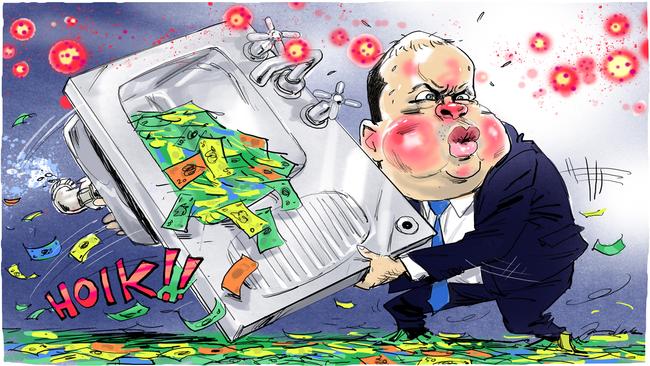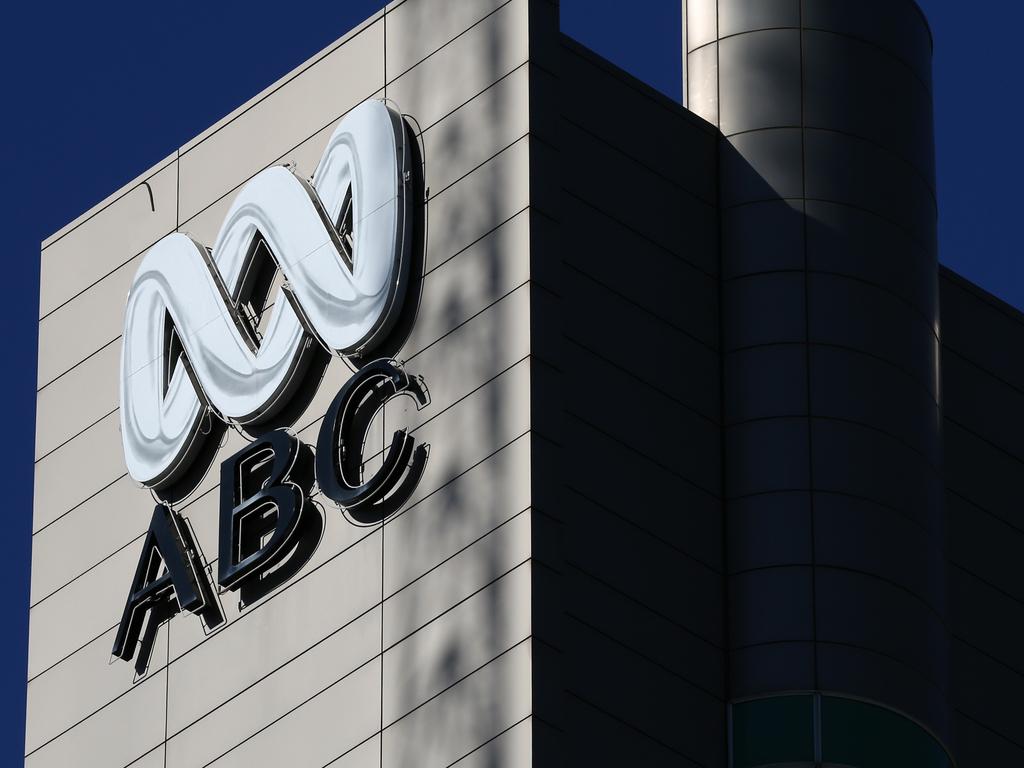
It is enshrined in extraordinary optimism amid the gloom. It creates winners across the nation to fight the loss of jobs, struggling businesses and what it calls the COVID recession. If realised, it leaves Australia as a stellar global performer.
It forecasts unemployment to peak in the December quarter at 8 per cent, fall to 6.5 per cent in 2021-22 and return to the normality zone of 5.5 per cent in 2023-24. That means the priority until deep into the next parliamentary term will remain tax cuts, spending, support for businesses and jobs.
It exists, of course, as permanent hostage to success against COVID-19. But this budget turns fighting a recession into a good news story with a powerful re-election narrative.
Its magic lies in the coupling of high unemployment with historic low interest rates — it means that gross debt reaching a huge $1.7 trillion in the medium term is financed at virtually no extra burden, with interest payments on debt this year increasing by only 0.1 per cent of GDP.
In short, the massive economic expansion comes at virtually no extra interest cost. This is the time to go Keynesian on steroids. It is the key to the fiscal and economic strategy of the government.
The key to the political strategy is pragmatism and compromise, apparent above all in the tax packages. It reveals much about Scott Morrison and Josh Frydenberg — their tax decisions are pitched to equity and investment and are structured to win Senate approval for quick effect. The aim is to maximise cash into the economy but minimise political obstruction in the parliament.
The Treasurer will roll the tax changes into one bill to steamroller the process. The personal income tax cut package delivers majority benefits in 2020-21 to wage earners on less than $90,000. More than seven million people will receive tax relief of $2000 or more this year. Dual-income families will win an extra $5490 compared with 2017-18 settings.
The government did not bring forward the stage-three tax cuts Labor opposes for equity reasons. It brought forward stage-two tax cuts, then provided an extra benefit from the tax offset, putting more money into the pockets of low to middle earners, where it is more equitable and more likely to be spent. The cost is $17.8bn across the forward estimates.
At the same time, it introduces temporary mechanisms for more than 99 per cent of business to write off the full value of eligible assets they purchase along with allowing companies to offset losses against prior profits — the impact being the creation of an extra 50,000 jobs at a cost of $22.7bn across the forward estimates.
The method of job creation is critical. The aim is to drive private sector jobs via tax concessions, investment incentives and wage subsidies. Hence Frydenberg’s claim that the rebuilding reflects Liberal values: economic growth, tax relief, personal responsibility, the power of aspiration.
The budget admits the health crisis and lifting of restrictions are “significant risks”. Its decisive assumption, reasonably justified, is that an Australia-wide COVID vaccination will be fully in place by late next year and localised outbreaks will be contained. It assumes that premiers, outside Western Australia, don’t sabotage recovery and will open their borders by the end of the year.
Pivotal to the coming year is the tricky transition away from JobKeeper, which sustains current jobs — now supporting 3.5 million people in 900,000 businesses — to policies that drive new jobs and attack unemployment. Avoiding any labour market cliff in this transition is critical for the budget’s success.
The JobMaker hiring credit is the classic new policy: a $200 weekly payment to employers for hiring people on unemployment benefits aged 16-35, with Treasury estimating this will support 450,000 jobs for young people at a cost of $4bn over three years.
The budget’s foundational assumption is that virtually the entire community has a role in fighting the recession. That means nearly everybody becomes a winner. Indeed, this budget seeks a new concord — to turn recession fighting into an appealing election strategy.
The instruments being deployed are cash handouts, income tax cuts, corporate incentives, wage subsidies, apprenticeship support, infrastructure funding, superannuation reform, more pensioner support and funding for health, hospitals, childcare, aged care and the NDIS.
Aware of the budget’s vulnerability to the virus, Treasury offers two scenarios. Its “early vaccine” upside assumes a vaccine rollout from next July and an earlier return of international students — this means increased economic growth of 1.5 per cent in 2021-22 compared with the central forecasts.
The downside scenario is grim. It assumes reimposition of containment measures on 25 per cent of the national economy from January next year to June 2022, a hit of $55bn to the economy with economic growth one percentage point lower in both 2020-21 and 2021-22. This would constitute a damaging legacy for the economy and the government’s political strategy — a reminder of the uncertainty in the time of COVID.
The budget’s central forecasts, however, point to a strong growth kickback after the recession with real GDP to fall 3.75 per cent in calendar 2020 before growing by 4.25 per cent in calendar 2021.
Since the onset of the COVID crisis, the government has provided total economic support of an unprecedented $257bn, with the budget constituting $98bn in new recovery measures.
The budget bottom line has deficit figures that would have been beyond the imagination at the start of this year. The 2020-21 deficit is $214bn — that equates to 11 per cent of GDP and the cumulative deficit across the four years of forward estimates is $480.5bn.
Yet the growth-driven rate of deficit decline is significant. By 2023-24, the deficit is projected to fall to 3 per cent of GDP. By global standards, Australia’s debt levels are far below the OECD average.
Provided that interest rates stay low, Frydenberg enjoys a historic gift, the financing of his monumental expansion at a stunningly low price.








This budget has two goals: beating a recession and winning an election.